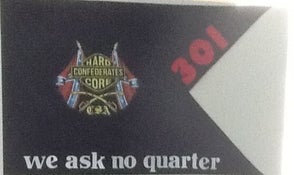The Two Party System
After the debacle of the one-party presidential campaign of 1824, a new two-
party system began to emerge. Strong public reaction to perceived corruption
in the vote in the House of Representatives, as well as the popularity of Andrew
Jackson, allowed Martin Van Buren to organize a Democratic Party that
resurrected a Jeffersonian philosophy of minimalism in the federal government.
This new party opposed the tendencies of National Republicans such as John
Quincy Adams and Henry Clay to invest more power in the federal government.
Van Buren built a political machine to support Jackson in the 1828 election.
Van Buren’s skills helped give the Democrats a head start on modern-style
campaigning and a clear advantage in organization.
The Democrats defeated the National Republicans in 1828 and 1832. The
Democrats maintained their hold on the presidency when they bested the
Whigs—a union of former National Republicans, Anti-masons, and some
states’ rights advocates—in 1836. But a major economic depression in 1837
finally gave the Whigs their best chance to occupy the White House.
They faced Andrew Jackson’s political organizer, vice-president, and
handpicked successor, President Martin Van Buren, who was vying for a
second term.
By the time forces were readying themselves for the election of 1840, both
Democrats and Whigs understood how to conduct effective campaigns. In an
election that would turn out an astounding 80 percent of a greatly expanded
electorate, the parties were learning to appeal to a wide range of voters in a
variety of voting blocks, a vast change from the regionally based election of
1824.
The Democrats felt, despite hard times, that the issues were on their side. They
published a fairly specific platform, the first document of its kind from a major
national party.
The Democrats re-nominated Van Buren and adopted a platform denouncing
internal improvements at national expense, a protective tariff, a national bank,
and any interference by Congress with slavery. The campaign, however, was
not fought on these issues…Hard times and falling prices for wheat and cotton
played a large part in the contest, but the main issue presented to the people
was a manufactured one. …Portraying their candidate as an honest high-
principled farmer who lived in a log cabin with the latch string always out, a
coon skin nailed to the door and a barrel of cider (sweet cider in prohibition
areas) for the refreshment of visitors… they contrasted this democratic
simplicity with the… luxury that surrounded “Sweet Sandy Whiskers” Van Buren
at the White House.”
This hullabaloo undoubtedly swayed thousands of voters, but more effective still
was the Whig organization for the campaign., the outlines of which were set up
at Harrisburg (site of the Whig convention) and developed by Weed (Thurlow
Weed, 1797-1882, a New York journalist and founding editor of the Albany
Evening Journal, a pro-Whig—
Permission is granted to educators to reproduce this worksheet for classroom
use. The Campaign of 1840: William Henry Harrison and Tyler, Too — http://edsitement.neh.gov/view_lesson_plan.asp?id=553


